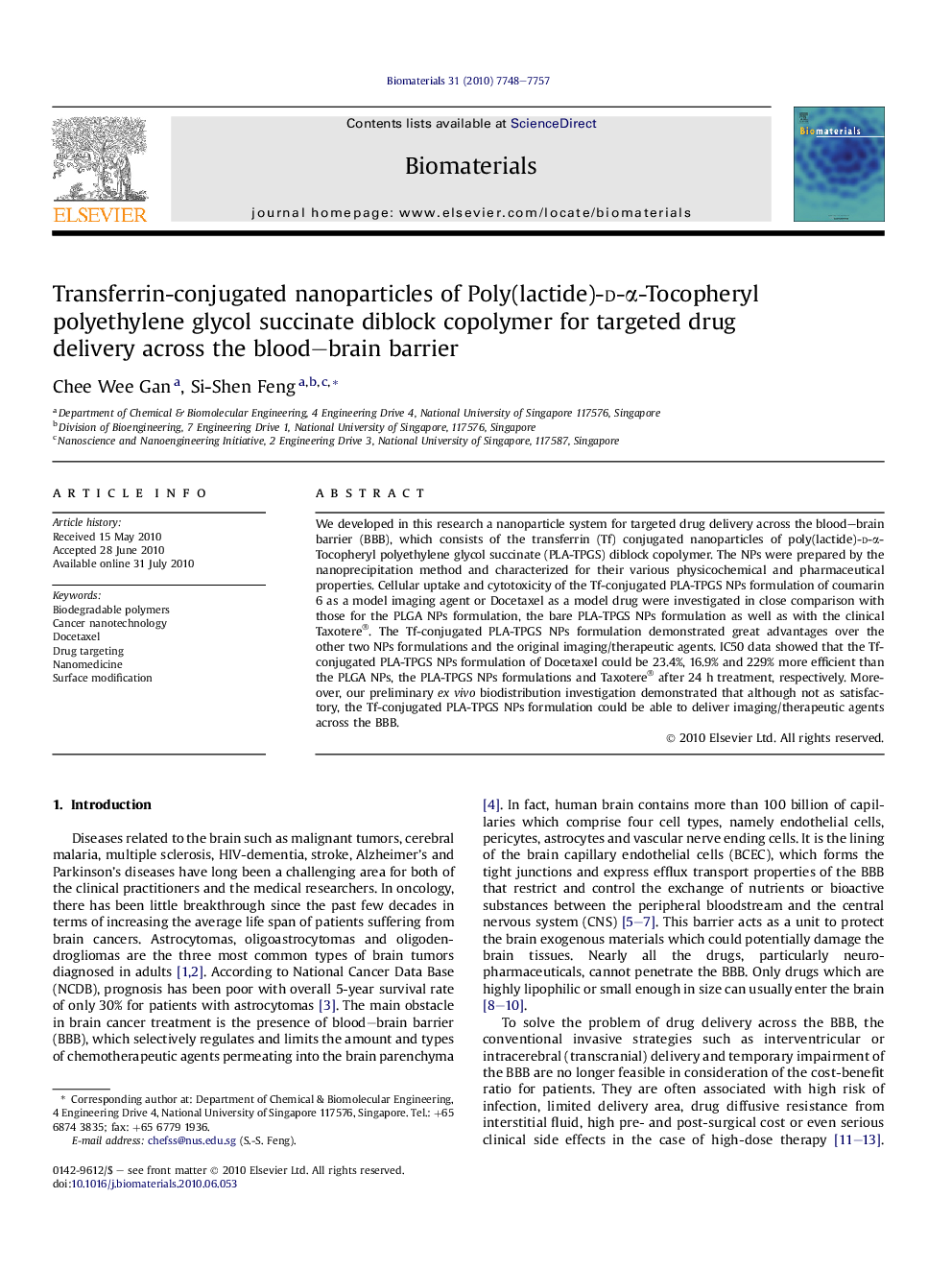| Article ID | Journal | Published Year | Pages | File Type |
|---|---|---|---|---|
| 7737 | Biomaterials | 2010 | 10 Pages |
We developed in this research a nanoparticle system for targeted drug delivery across the blood–brain barrier (BBB), which consists of the transferrin (Tf) conjugated nanoparticles of poly(lactide)-d-α-Tocopheryl polyethylene glycol succinate (PLA-TPGS) diblock copolymer. The NPs were prepared by the nanoprecipitation method and characterized for their various physicochemical and pharmaceutical properties. Cellular uptake and cytotoxicity of the Tf-conjugated PLA-TPGS NPs formulation of coumarin 6 as a model imaging agent or Docetaxel as a model drug were investigated in close comparison with those for the PLGA NPs formulation, the bare PLA-TPGS NPs formulation as well as with the clinical Taxotere®. The Tf-conjugated PLA-TPGS NPs formulation demonstrated great advantages over the other two NPs formulations and the original imaging/therapeutic agents. IC50 data showed that the Tf-conjugated PLA-TPGS NPs formulation of Docetaxel could be 23.4%, 16.9% and 229% more efficient than the PLGA NPs, the PLA-TPGS NPs formulations and Taxotere® after 24 h treatment, respectively. Moreover, our preliminary ex vivo biodistribution investigation demonstrated that although not as satisfactory, the Tf-conjugated PLA-TPGS NPs formulation could be able to deliver imaging/therapeutic agents across the BBB.
